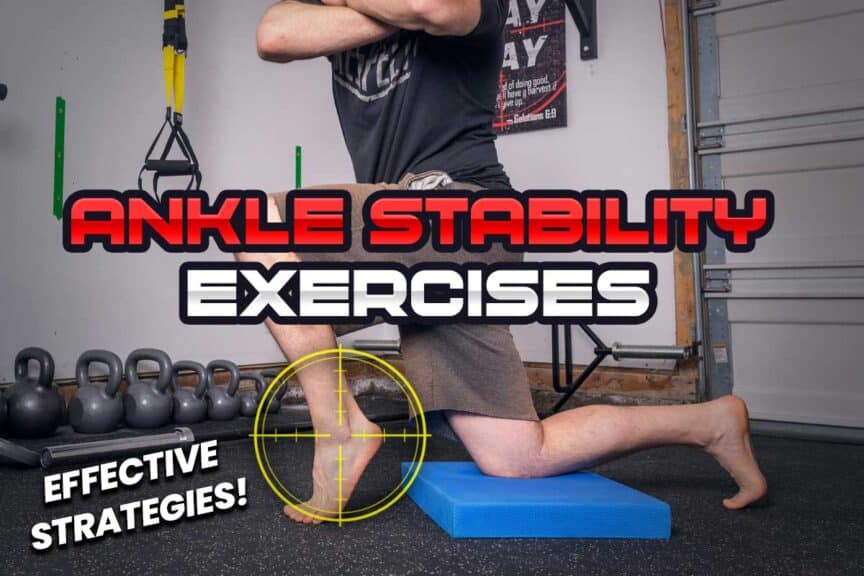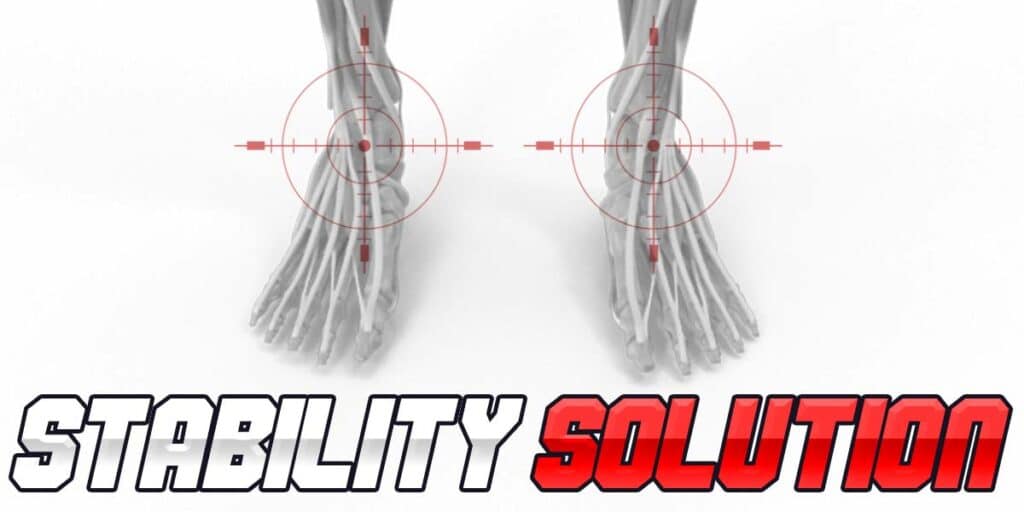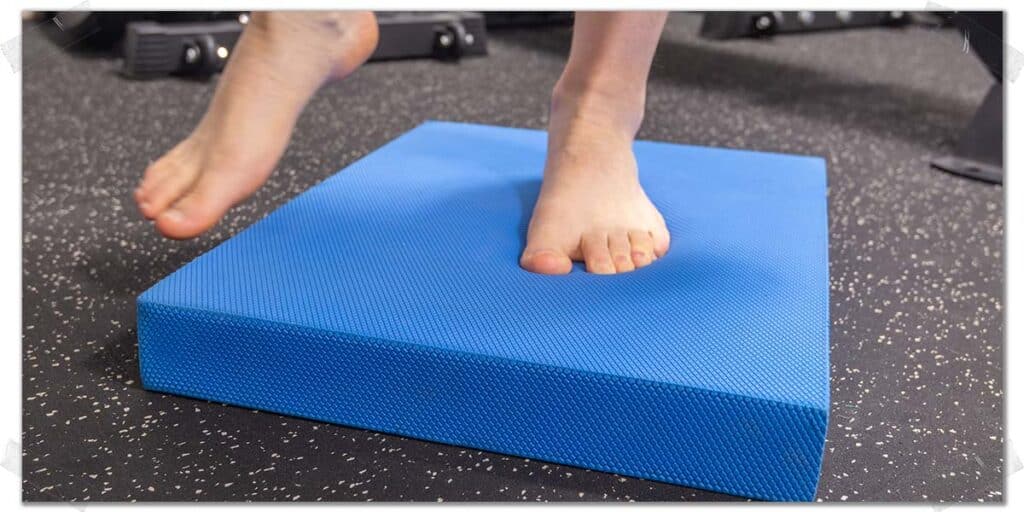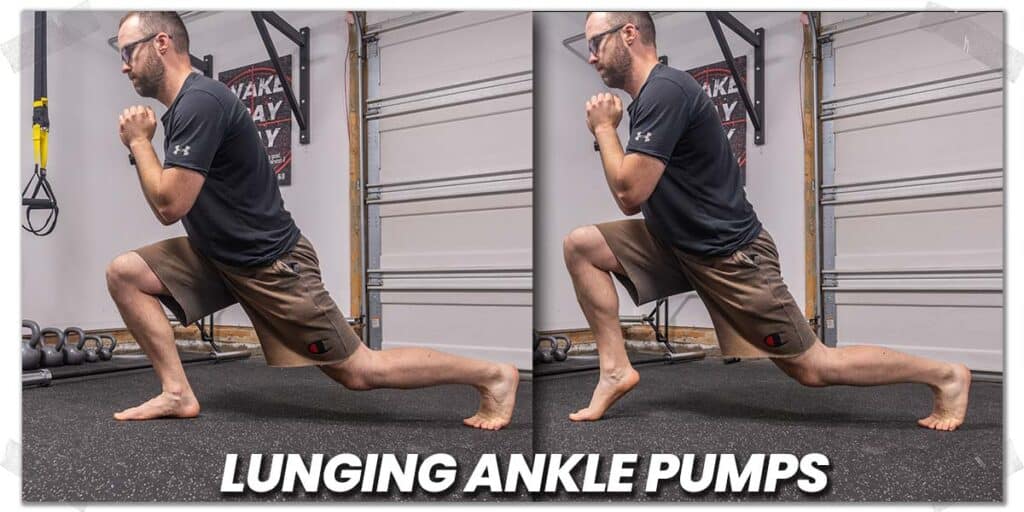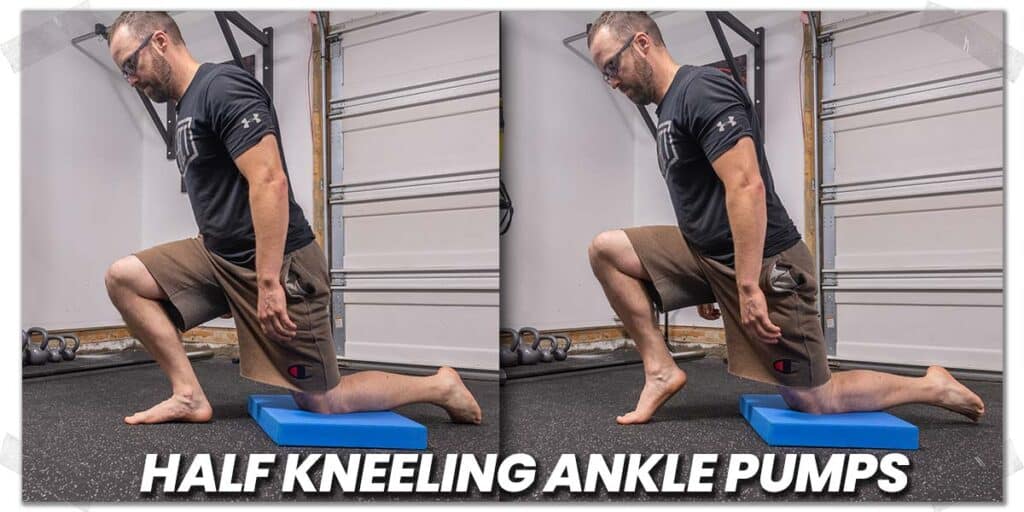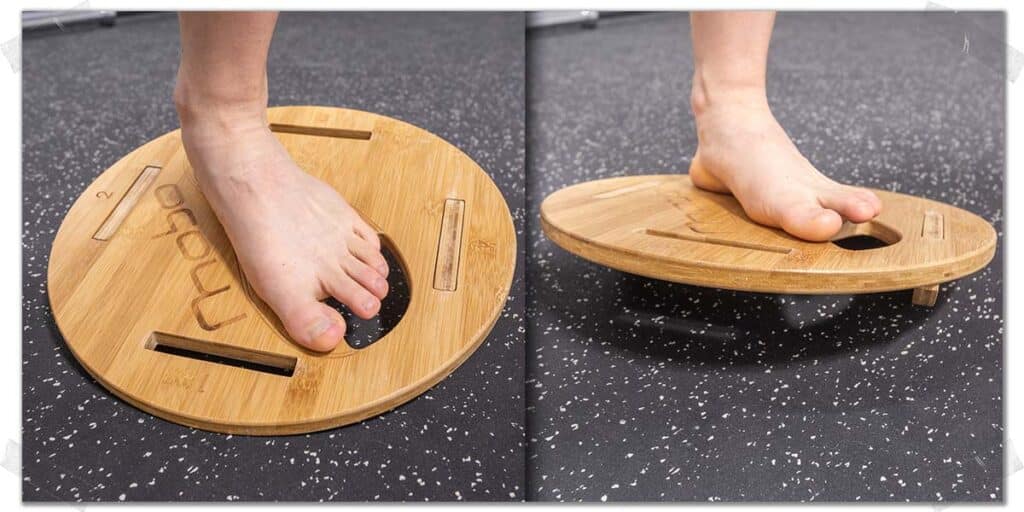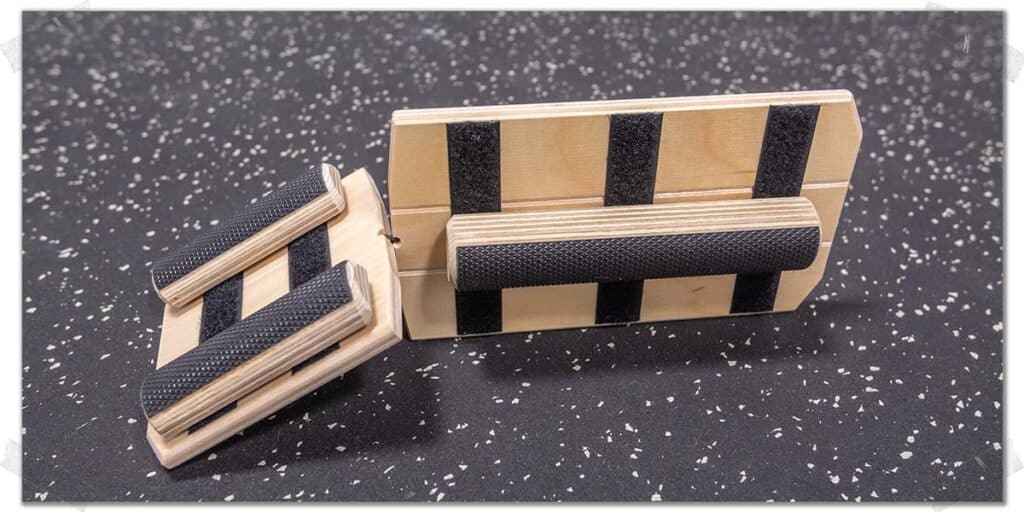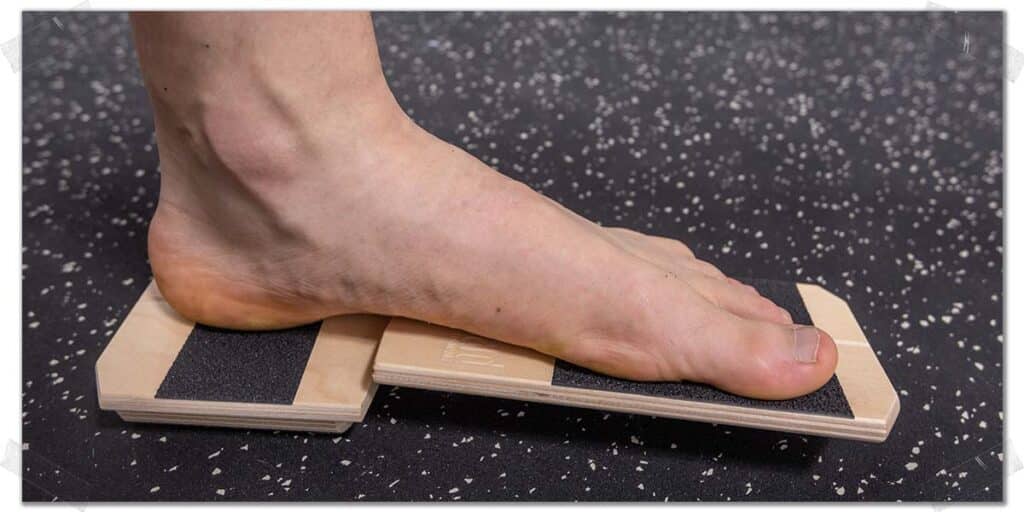When it comes to building a strong, optimally functioning body, ankles are one of the most often overlooked body parts. Without optimal ankle function (strength, mobility, and stability), the performance of your entire body can be compromised. After all, your entire body relies on having a healthy pair of ankles to produce full-body movement, and a chain is only as strong as its weakest link.
Whether you’re looking to prevent ankle injuries or desire to improve your ankle strength after an injury, this article will take you through some of the most beneficial ankle rehabilitation and prehabilitation (injury prevention) exercises I give my patients and athletes in the clinic and in the gym.
The following exercises, concepts, and strategies work well if you have an ankle with compromised stability, such as a “loose” ankle from a nasty ankle sprain (e.g., when rolling your ankle), and for ankles with adequate stability that simply need a bit more strength.
So, you’re in for a treat if you keep reading; I’ll walk you through my favorite ankle exercises and even throw in some neat facts, tricks, and strategies you can implement to ensure you squeeze every drop of efficiency out of your ankle training.
A small request: If you find this article to be helpful, or you appreciate any of the content on my site, please consider sharing it on social media and with your friends to help spread the word—it’s truly appreciated!
RELATED CONTENT:
Critical Factors: How ankle stability is achieved
Without getting into the super geeky details of foot and ankle biomechanics, I do believe it’s important that you have a rudimentary understanding of the main concept of improving ankle stability.
For the sake of this article, the main concept worth quickly discussing is ankle proprioception.
Proprioception is a fancy-sounding word that simply refers to the brain’s ability to perceive what’s happening for movement and positioning in a given body area without any visual input. In the context of the ankle, it plays a critical role in helping us maintain and achieve balance by interpreting the position(s) our ankle moves into and subsequently correcting any positioning errors present at a given time.
If you want an in-depth article on this topic, check out this article over at physio-podia.com, which will give you all the details on proprioception of the ankle.
Ankle proprioception is often impaired in those with previous ankle injuries, and there is strong clinical evidence to show that improving ankle proprioception can significantly help improve ankle stability.
Accordingly, the following exercises all have proprioceptive components within them, making them ideal for preventing future injuries and enhancing ankle stability.
Exercise 1: Air-X pad ankle balancing progressions
There are a near-infinite number of ankle stabilizing exercises that can be performed using an Air-X pad or similar cushion (I use a generic version I bought off Amazon). An ankle pad such as this is by far my most often utilized piece of equipment when working with others who have had various ankle injuries, ankle surgeries, or who have compromised balance.
These balancing pads are specifically designed to improve ankle stability. They work by creating a soft, dynamic surface that causes the ankle to wobble in all directions when stood upon.
Pro tip: These pads work great for saving your knees when performing kneeling exercises on the ground. I use them just as much for this purpose as I do for ankle training.
This wobbly surface that results from the foot pressing into the pad forces the intrinsic muscles of the foot (muscles that do not cross over the ankle joint) AND the extrinsic muscles of the foot (muscles that cross over the ankle joint) to rapidly contract and then relax as the pad’s surface dynamically squishes beneath the foot.
There are essentially two categories of ankle exercises that can be performed on these ankle pads (both of which have an infinite number of exercises you could perform). These categories are:
- Static balancing exercises
- Dynamic balancing exercises
“Ankle proprioception is often impaired in those with previous ankle injuries, and there is strong clinical evidence to show that improving ankle proprioception can significantly help improve ankle stability.”
Basic: Static balancing exercises
Static foot and ankle balancing exercises refer to keeping your entire body still while you simply try to maintain your standing position. This is typically performed while standing on one leg, but you could certainly stand on both legs if you have poor ankle stability or need less of a challenge than single-leg standing.
You can choose to stand directly on top of the pad, hold a lunge position with your front foot on the pad, or hold any other position you feel might create an optimal challenge for you.
These static exercises tend to be more appropriate in earlier stages of ankle rehabilitation since they are less challenging than their dynamic counterparts.
RELATED CONTENT:
Advanced: Dynamic balancing exercises
Dynamic foot and ankle balancing exercises refer to balancing on the pad while producing movement with any other part of your body. These types of exercises are more challenging than balancing exercises that involve keeping your body still.
As with the static balancing version, you can perform these dynamic ankle exercises with both feet on the pad or just one.
If you stand with both ankles on the pad, try performing some arm movements or arm exercises (biceps curls, lateral shoulder raises, etc.) or some simple torso movements like side bending to the left and right.
Keep your movements slow and controlled. You want any balancing exercise you perform here to be challenging but very doable. When you strike the optimal challenge, you’ll feel your ankles continually wobbling around as they fight to keep your body upright.
Smaller dynamic movements will be easier to perform than larger movements, and dynamic balancing exercises should likely be performed in later stages of injury rehabilitation once static foot and ankle balancing exercises can be adequately performed.
Anatomy fact: Ligaments are the tissues in the body that attach from one bone to another. If you roll or sprain your ankle, these ligaments can be overstretched or even torn, which can cause the affected ligaments to lose their “tightness,” decreasing stability within the ankle. The most commonly affected ligament when rolling the ankle is known as the anterior talofibular ligament.
Exercise 2: Lunging ankle stability pumps
Lunging ankle pumps are one of the most under-utilized ankle stability exercises out there (in my humble opinion, of course).
The beauty of this exercise is that it places a high physical demand on the entire front leg, challenging far more than your ankle’s stability; it challenges the strength of your ankle AND the endurance of your entire front leg.
To perform this exercise:
- Assume a standard lunge position (the front leg will be the ankle that is challenged).
- Lower yourself into the lunge as low as possible/comfortable.
- Hold this position as you now slowly and repeatedly lift the heel of your front foot off the floor as high as possible (the higher you lift your heel, the harder your ankle will be required to work to achieve stability).
- Perform as many repetitions as you can before your ankle or leg tires out.
- Switch your stance and repeat with the other leg.
Want to kick it up a notch? Perform this exact same exercise with your front foot on a balance pad—your ankle will now have to work much harder to achieve stability when lifting your heel upwards.
Half kneeling ankle pumps
If standing ankle pumps are a bit too much, you can regress the exercise to the half-kneeling version, where one knee is down on the ground. From there, simply lean forward and pump your ankle up and down.
As an alternative, you can try keeping your heel elevated while then twisting your upper body side to side. This is a dynamic variation that can work quite well for improving ankle stability and upper body balance.
Exercise 3: MOBO Board Balancing Exercises
The MOBO board is arguably the most unique balance board I’ve ever come across. In fact, it’s far more than just a balance board; this board is designed to not only improve ankle stability but also to improve ankle mobility (when needed) and big toe strength.
The board can wobble in different planes based on how you configure the balance rockers. This makes it perfect for those who need to improve ankle stability (or mobility) in certain directions.
However, what makes this board super unique is the hole where your small toes would otherwise rest. Only your big toe makes contact with the board, which forces the tendons on the bottom side of the toe (the flexor hallucis longus and flexor hallucis brevis). As a result, this balance board is brilliant for those who need to strengthen these muscles and who need to produce more ankle and foot stability using their big toe.
As with a standard ankle pad, you can opt for performing static balancing exercises or dynamic balancing exercises when using the MOBO.
My favorite drill to perform on the MOBO involves slowly tapping one edge of the board to the floor (in a very controlled manner) and then tapping the opposite edge to the floor.
Performing these controlled taps is a highly effective exercise for improving ankle balance, motor control, and stability through the joints of the ankle.
I’ve written a review article detailing my thoughts and experiences with the MOBO, so be sure to check it out if you are curious to learn more!
Exercise 4: Blackboard Ankle Stability Exercises
The Blackboard ankle trainer, much like the MOBO board, is a very unique ankle training device that can help improve ankle mobility, stability, and strength.
The device works by strengthening specific movement patterns in the foot and ankle depending on how you configure the balance bars on the bottom of the board. This allows you to target muscles and their subsequent tendons in different patterns, which can be profoundly helpful for ensuring you have adequate ankle strength and stability in all planes of movement.
What I love about the Blackboard trainer are the independent boards that separate movement from the hindfoot and the midfoot, allowing for a plane of ankle movement not seen on other balance boards or ankle devices. This not only adds a new element of foot (and ankle) control when ankle training but also serves as a way to help mobilize the transverse tarsal joint and even the tarsometatarsal joint to a certain extent.
If you want to give yourself more or less of a challenge when using the device, or if you want to change up the direction you work to stabilize your ankle, you simply reposition the balance bars on the board’s underside, which attach via Velcro.
The number of exercises you can perform to challenge (and improve) your ankle stability on this little board is quite surprising, and the fact that it isn’t a giant, clunky device like many other ankle boards on the market makes it an outstanding choice for those who are serious about improving the health and function of the feet and ankles.
My only gripe: while the Blackboard is indeed a fantastic piece of equipment for ankle rehabilitation and prehabilitation, I do wish it was a bit cheaper in its overall cost. It seems that the price has gone up since I ordered mine last year. If you’re a handyman (or woman), you can likely make your own for a quarter of the cost!
Final thoughts
Improving your ankle stability with the right exercises doesn’t have to be overly complex. The exercises and equipment discussed in this article can serve as a solid starting point for helping you recover from various types of ankle injuries or preventing ankle issues altogether.
So, now that you know the details behind building a sturdy set of ankles, go make some great things happen!
Frequently Asked Questions
Below, you will find a couple of answers to some frequently asked questions regarding ankle instability—I hope they help to add value and insight to this article for you!

Hi! I’m Jim Wittstrom, PT, DPT, CSCS, Pn1.
I am a physical therapist who is passionate about all things pertaining to strength & conditioning, human movement, injury prevention and rehabilitation. I created StrengthResurgence.com in order to help others become stronger and healthier. I also love helping aspiring students and therapists fulfill their dreams of becoming successful in school and within their clinical PT practice. Thanks for checking out my site!

